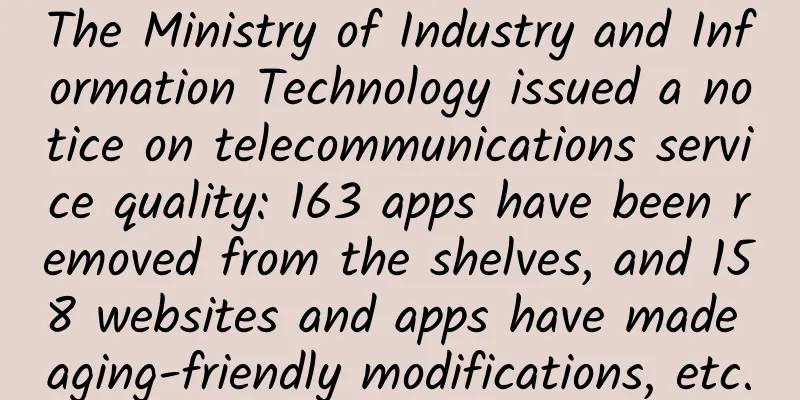5G is not yet popular, but 6G is coming? Key technologies are still being explored

|
5G is not yet popular, but the United States claims to have started developing 6G. Should we try 5G or wait for 6G? On February 21, US President Trump said, "I hope 5G and even 6G will be implemented in the United States as soon as possible." Recently, the Federal Communications Commission of the United States took a step towards Trump's instructions and decided to open the 95 GHz to 3 terahertz frequency band for 6G experiments. Ted Rappaport, a professor at New York University, issued a statement: "The Federal Communications Commission has already started the race for 6G." Have we not yet enjoyed the dividends of 5G deployment, and the faster 6G network is already roaring? Is 6G "just beginning to show its tip" or "all its charm is about to bloom"? A reporter from Science and Technology Daily interviewed He Jiguang, a postdoctoral fellow and wireless communication expert at the University of Oulu in Finland.
Key technologies are still being explored "The 5G network has not been completed, and even the international standards have not been fully formulated. 6G is still in its infancy and has just begun research. There is not even a clear concept definition, and its key technologies are still being explored." He Jiguang told reporters that it takes time from the beginning of research to the maturity of technology. The European Union launched the METIS project (Mechanical Boosters for the Information Society and Mobile Wireless Communications 2020) in 2013 to conduct 5G research, but the key technologies were not fully determined until the end of the project in 2015. "As a wireless communication researcher, I believe that 6G will come one day, but now is still a period of perfecting 5G and exploring 6G." "Terahertz is considered by many to be one of the key technologies of 6G. In fact, whether terahertz can be used in wireless communications is still under discussion." He Jiguang introduced that terahertz was previously mainly used for radar detection and medical imaging, and its application in wireless communications has only begun to be studied in the past two years. It is characterized by high frequency and high communication rate. In theory, it can reach terabytes per second (TB/S), but in fact, it is still unclear which application requires such a high network speed. Moreover, terahertz has obvious disadvantages, that is, the transmission distance is short and it is easily interfered by obstacles. The current communication distance that can be achieved is only about 10 meters, and only by solving the communication distance problem can it be used in existing mobile communication cellular networks. In addition, the higher the communication frequency, the higher the requirements for hardware equipment, which requires better performance and processing technology. These technical problems are difficult to solve in a short period of time. The route plan needs to be verified "At present, international communication technology research and development institutions have proposed a variety of technical routes to realize 6G, but these plans are still in the conceptual stage, and whether they can be implemented still needs to be verified." He Jiguang said that the Wireless Communications Center of the University of Oulu is one of the earliest institutions in the world to start 6G research and development, and is currently conducting research in four areas: wireless connection, distributed computing, device hardware, and service applications. Wireless connection uses terahertz or even higher frequency radio waves for communication; distributed computing uses artificial intelligence, edge computing and other algorithms to solve the latency problem caused by large amounts of data; device hardware is mainly for terahertz communication, and the corresponding antennas, chips and other hardware are developed; service applications are to study possible application areas of 6G, such as autonomous driving. "There are only these four directions at present, and the specific details have not yet been clarified." The reporter learned that the Information and Communication Technology Center of South Korea's SK Group proposed a 6G technology solution of "terahertz + de-cellularized structure + high-altitude wireless platform (such as satellites, etc.)" in 2018. It not only applies terahertz communication technology, but also completely transforms the existing mobile communication cellular architecture and establishes an integrated air-ground-space communication network. He Jiguang pointed out that the decellularization structure mentioned by SK Group is one of the current research hotspots, that is, base stations may not be arranged in a honeycomb pattern, and terminals may not communicate with only one base station. This can indeed improve spectrum efficiency. The research team of Linköping University in Sweden first proposed the decellularization structure concept. However, whether this concept can meet the 6G latency, communication rate and other indicators still needs to be verified. In addition to SK Group, Bell Labs in the United States has also proposed a technical route of "terahertz + network slicing". These solutions require long-term experimental verification in technical details. The cost of promoting application is high "For wireless communication to develop further, large investments are indispensable." He Jiguang said that there are two options to increase communication speed: one is to make base stations denser and increase the deployment volume. Although the power of base stations can be reduced, the increase in number will still lead to rising costs; the second option is to use higher frequency communications, such as terahertz or millimeter waves, but high frequencies have higher requirements for hardware equipment such as base stations and antennas. The cost of conducting terahertz communication hardware tests is now beyond the affordability of general research institutions. In addition, from the perspective of the number of base station antennas, 4G base stations have only 8 antennas, while 5G can have 64, 128 or even 256 antennas. 6G may have more antennas, and the replacement of base stations will also increase application costs. "It is difficult to realize the envisioned 6G vision by relying solely on algorithm optimization and other measures without changing the existing communication frequency bands. It is also unrealistic to replace all base stations." He Jiguang believes that in the future, non-independent networking will most likely be adopted, that is, 6G equipment will be deployed on the basis of existing base stations and other facilities. 6G will coexist with 5G and even 4G and 4.5G networks. 6G will mainly be used in densely populated areas or to meet high-end applications in vertical industries such as autonomous driving, telemedicine, and smart factories. In fact, ordinary people do not have too high demands for speeds of dozens of G or even terabytes per second. Moreover, if 6G uses millimeter wave or terahertz as communication frequency, the price of its mobile terminal will inevitably be high. "6G may have some technological breakthroughs in the next few years, but it is still a long way from application deployment." He Jiguang predicted that on the one hand, there are relatively few scientific research institutions engaged in 6G research and development, and technological development still needs time; on the other hand, standardization after technological breakthroughs also takes time. Judging from the development of technology, 6G will definitely come. However, there is technology only when there is demand. The technical indicators of 5G can meet most industry applications for a long time, and the investment in promoting and popularizing 5G is also very high. Unless there is an extremely urgent need for 6G in social development, 6G will not replace 5G in a short period of time. |
<<: Let you know the more common Wi-Fi standards and types
Recommend
IOFLOOD: $59/month-E3 1230v2, 32GB memory, 2x8TB hard disk, 20TB/1Gbps, Phoenix data center
I checked and found that the last time I shared i...
JuHost: $2.99/month-1GB/20G SSD/1TB@100Mbps/Kowloon, Hong Kong
JuHost has released a regular November promotion,...
Understand in one article: website, URL, domain name, IP address, DNS, domain name resolution
Today, I will give you a long article about web a...
iPerf3 Tutorial: The Ultimate Tool for Easily Evaluating Network Performance
1. Introduction to iPerf3 iPerf3 is a widely used...
How did TA succeed in intercepting tens of millions of malicious addresses?
Want to self-check and improve your cybersecurity...
With spectrum deployment and commercialization accelerating, how far is it from 5G clearance?
On June 15, 2017, the global 5G entered a critica...
Microsoft blocks IE10 and other older browsers from accessing official websites
Although you may have bought the genuine version ...
Top SD-WAN vendors and manufacturers in 2021
Software-defined WAN (SD-WAN), as the name implie...
Share | Basic knowledge of 5G wireless network
Wireless networks have improved dramatically over...
RedCap Will 5G spark an IoT gold rush?
A scaled-down version of 5G could spark a surge i...
A brief introduction to ZAB protocol in Zookeeper
The full name of the ZAB protocol is Zookeeper At...
iWebFusion: Los Angeles and other 5 data center servers starting from $49/month, E3-1230v3/16GB/250G SSD/10TB/IPv4+IPv6
iWebFusion (iWFHosting) is a subsidiary of H4Y, a...
KVMCloud: 50% off on all Hong Kong/Singapore/Korea/Japan VPS starting from NT$32/month
KVMCloud appeared on the tribe for the first time...
Don't just look at the wireless router antenna. WiFi signal is only related to this parameter.
When buying a wireless router, should you buy one...
Easy-to-understand illustrations of online interview knowledge - Part 1
Regarding network knowledge, I mainly talk about ...









